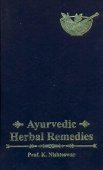Sehunda, Sehuṇḍa: 4 definitions
Introduction:
Sehunda means something in Hinduism, Sanskrit, biology. If you want to know the exact meaning, history, etymology or English translation of this term then check out the descriptions on this page. Add your comment or reference to a book if you want to contribute to this summary article.
In Hinduism
Ayurveda (science of life)
Source: Ancient Science of Life: Vaidyavallabha: An Authoritative Work on Ayurveda TherapeuticsSehuṇḍa (सेहुण्ड) refers to Snuhi (Euphorbia neriifolia) and is the name of a medicinal plant dealt with in the 17th-century Vaidyavallabha written by Hastiruci.—The Vaidyavallabha is a work which deals with the treatment and useful for all 8 branches of Ayurveda. The text Vaidyavallabha has been designed based on the need of the period of the author, availability of drugs (viz., Sehuṇḍa) during that time, disease manifesting in that era, socio-economical-cultural-familial-spiritual-aspects of that period Vaidyavallabha.

Āyurveda (आयुर्वेद, ayurveda) is a branch of Indian science dealing with medicine, herbalism, taxology, anatomy, surgery, alchemy and related topics. Traditional practice of Āyurveda in ancient India dates back to at least the first millenium BC. Literature is commonly written in Sanskrit using various poetic metres.
Biology (plants and animals)
Source: Google Books: CRC World Dictionary (Regional names)1) Sehunda in India is the name of a plant defined with Euphorbia neriifolia in various botanical sources. This page contains potential references in Ayurveda, modern medicine, and other folk traditions or local practices It has the synonym Tithymalus edulis (Lour.) H. Karst. (among others).
2) Sehunda is also identified with Euphorbia nivulia It has the synonym Euphorbia neriifolia Roxb., nom. illeg. (etc.).
Example references for further research on medicinal uses or toxicity (see latin names for full list):
· Verhandelingen van het Bataviaasch Genootschap van Kunsten en Wetenschapen (1790)
· FBI (1887)
· Species Plantarum (1753)
· Flora de Filipinas (1837)
· Taxon (1982)
· Hortus Bengalensis, or ‘a Catalogue of the Plants Growing in the Hounourable East India Company's Botanical Garden at Calcutta’ (1814)
If you are looking for specific details regarding Sehunda, for example chemical composition, pregnancy safety, extract dosage, health benefits, side effects, diet and recipes, have a look at these references.

This sections includes definitions from the five kingdoms of living things: Animals, Plants, Fungi, Protists and Monera. It will include both the official binomial nomenclature (scientific names usually in Latin) as well as regional spellings and variants.
Languages of India and abroad
Sanskrit dictionary
Source: Cologne Digital Sanskrit Dictionaries: Monier-Williams Sanskrit-English Dictionary1) Sehuṇḍa (सेहुण्ड):—m. Euphorbia Ligularia (cf. sīh), [Kāśī khaṇḍa, from the skanda-purāṇa]
2) Sehuṇḍā (सेहुण्डा):—[from sehuṇḍa] f. idem, [Bhāvaprakāśa]
[Sanskrit to German]
Sanskrit, also spelled संस्कृतम् (saṃskṛtam), is an ancient language of India commonly seen as the grandmother of the Indo-European language family (even English!). Closely allied with Prakrit and Pali, Sanskrit is more exhaustive in both grammar and terms and has the most extensive collection of literature in the world, greatly surpassing its sister-languages Greek and Latin.
See also (Relevant definitions)
Query error!
Full-text: Simhatunda, Netrari, Vajravriksha, Sihunda, Snuhi.
Relevant text
Search found 8 books and stories containing Sehunda, Sehuṇḍa, Sehuṇḍā; (plurals include: Sehundas, Sehuṇḍas, Sehuṇḍās). You can also click to the full overview containing English textual excerpts. Below are direct links for the most relevant articles:
International Ayurvedic Medical Journal
A review on upavisha - snuhi (euphorbia nerifolia linn) < [2016, Issue VII July]
A summary on medicinal plants of jangala desha with respect to indian arid zone < [2023, Issue 09. September]
A review on medicinal uses of vishatinduka w.r.t rasa tarangini < [2023, Issue 06, June]
World Journal of Pharmaceutical Research
Snuhi (euphorbia nerifolia linn.) upavisha – a review < [2021: Volume 10, August issue 10]
Literature review on important ancient drugs used for preperation of ksharsutra < [2017: Volume 6, December special issue 17]
Review of snuhi (Euphorbia antiquorum) in Ayurvedic texts. < [2023: Volume 12, April issue 5]
Analysis of Snuhi (Euphorbia Neriifolia) as a Poisonous Therapeutic Aid < [Volume 8, Issue 5: September-October 2021]
The glorious history of ksharasutra – a literature review < [Volume 5, Issue 5: September-October 2018]
Arka Kalpana - A Review of Traditional and Modern Methods < [Volume 11, Issue 3: May-June 2024]
Vaidyavallabha: An Authoritative Work on Ayurveda Therapeutics < [Volume 36 (issue 2), Oct-Dec 2016]
Rasa Jala Nidhi, vol 1: Initiation, Mercury and Laboratory (by Bhudeb Mookerjee)
Part 12 - Mercurial operations (10): Swallowing of metals of Mercury (grasana) < [Chapter IV-V - Mercurial operations]
Part 1 - Additional process for transformation of base metals into gold and silver < [Chapter VIII - Conclusion of first volume]
Part 18 - Mercurial operations (16): Incineration of mercury (bhasmikarana) < [Chapter IV-V - Mercurial operations]
Journal of Ayurveda and Holistic Medicine
Therapeutic review on panduharadravyas (drugs for anaemia) from nighantus < [Volume 4, issue 2 (2016)]
Related products
